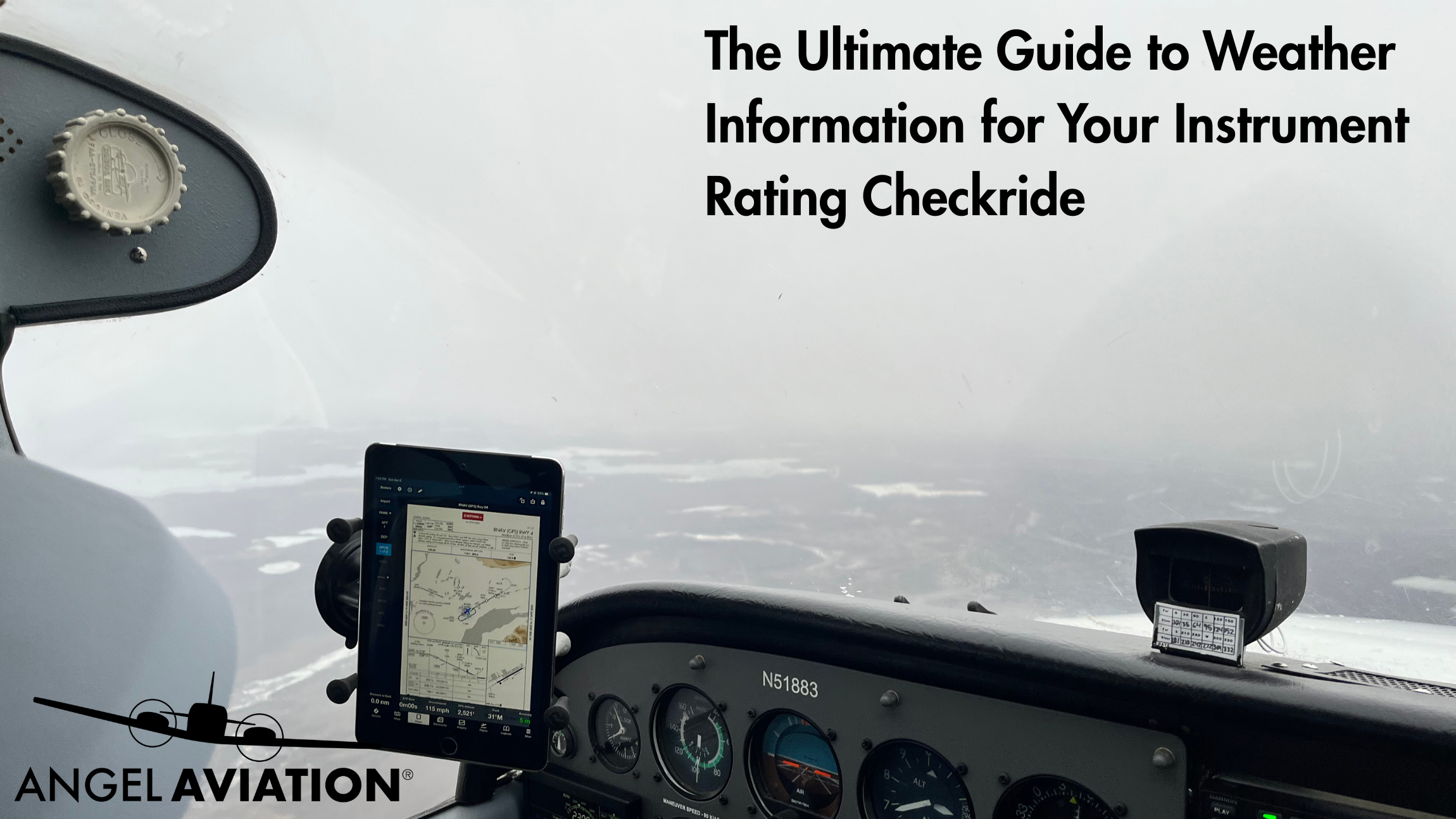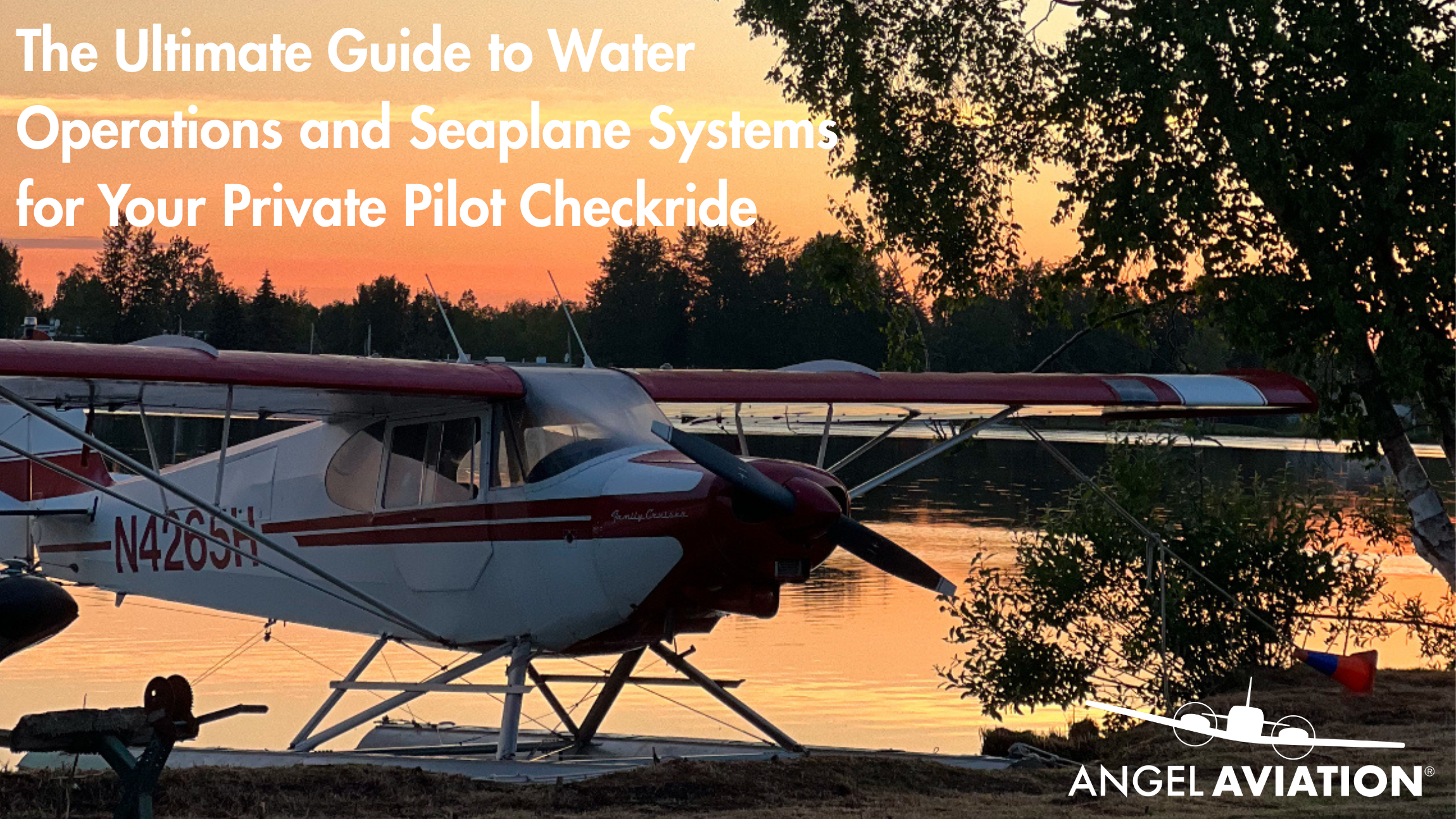At Angel Aviation, we believe that weather knowledge isn’t just a checkride item — it’s the key to safe IFR flight. Before your DPE has you brief an approach or divert for a pop-up thunderstorm, they’ll test whether you can analyze, interpret, and apply real-time and forecasted weather data to make informed decisions.
This guide covers everything in ACS Area IV: Weather Information, referencing FAA resources, decoding charts and reports, and showing you exactly what your examiner wants to hear in the oral.
🎯 What the Examiner Is Looking For
Under Instrument Rating ACS Area IV, your DPE wants to see that you can:
- Obtain and interpret aviation weather data from approved sources
- Apply weather reports and forecasts to your preflight planning
- Understand the impact of adverse weather conditions on IFR operations
- Make safe, informed go/no-go and diversion decisions
Let’s break it down into key knowledge areas and practical tips.
🌐 Weather Sources You Must Know
📚 Ref: FAA-H-8083-15B (IFH), FAA Advisory Circular 00-45, Aviation Weather Center (AWC)
Be able to identify where you’re getting your data — and whether it’s legal for IFR flight.
✅ Primary Sources:
- Flight Service (FSS/1800WXBRIEF or Leidos)
- Aviation Weather Center (aviationweather.gov)
- ForeFlight/other FAA-approved EFBs
- ATIS, ASOS, AWOS
✅ Supplemental Sources (not for sole reliance):
- TV/Internet weather apps
- Social media or non-FAA-approved websites
💡 Angel Tip: Always cite an FAA-approved source when briefing the examiner — it shows professionalism and legality.
🧩 METARs, TAFs, and Beyond: What You Must Decode
📚 Ref: AC 00-45H, AIM Chapter 7
Your examiner may hand you raw reports or ask for an interpretation. Make sure you can confidently brief:
✅ METARs – Hourly surface observations
✅ TAFs – Terminal forecasts (including tempo/prob groups)
✅ AIRMETs – Widespread moderate hazards (icing, turbulence, IFR)
✅ SIGMETs – Severe or extreme weather (TS, turbulence, volcanic ash)
✅ Convective SIGMETs – Thunderstorms and severe convection
✅ PIREPs – Pilot-reported conditions aloft
✅ Winds and Temps Aloft – Wind direction, velocity, and forecasted temps
✅ Radar and Satellite Imagery – Areas of precipitation or cloud cover
✅ Surface Analysis/Prog Charts – Big-picture movement of systems
🧠 Be ready to brief this weather for each phase of flight: departure, en route, and arrival.
✈️ How to Brief a Weather Scenario
Your DPE might ask:
“Walk me through the current weather for your planned flight from KPHX to KDEN.”
Here’s how to impress them:
- Overview: “I’m departing under VFR conditions, with developing IFR along the route near the front shown on the Prog Chart.”
- METAR/TAF: “KPHX shows clear skies, light winds; KDEN has deteriorating visibilities and ceilings with a TEMPO group forecast for snow.”
- Advisories: “AIRMET Sierra for widespread IFR, Convective SIGMET along eastern New Mexico.”
- PIREPs: “Multiple moderate turbulence reports at FL180 over northern Arizona.”
- Decision-making: “I’d delay the flight or file alternate routing to avoid embedded convective activity.”
⚖️ Legal Weather Minimums to Know
📚 Ref: 14 CFR §91.169, §91.103, §91.155
Know these cold:
- IFR Filing Weather: Must obtain weather reports/forecasts for departure, destination, and alternate
- Alternate Required? If destination weather is below 2000 ft ceiling and 3 SM visibility within 1 hour of arrival, list an alternate
- Alternate Minimums:
- Precision approach: 600 ft ceiling / 2 SM vis
- Non-precision: 800 ft / 2 SM
- No instrument approach: VFR descent from MEA
🧠 Questions You Might Hear
✅ “How do you know if an alternate is required?”
✅ “Interpret this METAR and tell me if you can depart.”
✅ “Where would you find the freezing level?”
✅ “What is an AIRMET Zulu, and how would it affect your flight?”
✅ “What’s your personal minimum for crosswinds, icing, or thunderstorm avoidance?”
🧭 Bonus: Go-To FAA References
- AC 00-45H – Aviation Weather Services
- AIM Chapter 7 – Aviation Weather
- §91.169 – IFR flight plan requirements
- §91.103 – Preflight action
- §91.155 – Weather minimums
- FAA Weather Products website – aviationweather.gov
🧾 Final Thoughts from Angel Aviation
Weather isn’t just something you check before flight — it’s a living, evolving part of your IFR decision-making process. By mastering weather data interpretation and applying it to real-world flying, you’ll prove to your examiner that you’re ready to operate safely in the system.






Leave A Comment